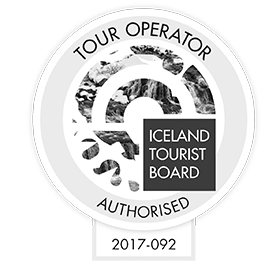- Vehicle Guide
- Passenger cars
- Estate
- Electric
- 4x4 SUVs
- Suzuki Jimny 4x4
- Dacia Duster 4x4
- Suzuki Vitara 4x4
- Suzuki Vitara auto 4x4
- Dacia Bigster 4x4
- Kia Sportage 4x4 Auto
- Kia Sportage PHEV 4x4 auto
- Mitsubishi Outlander PHEV 4x4 auto
- Toyota Rav4 4x4
- Toyota Rav4 4x4 auto
- Kia Sorento 4x4 auto
- Toyota Landcruiser 150 4x4 auto
- Toyota Landcruiser 250 4x4 auto
- Landrover Discovery 5 4x4 auto
- Landrover Defender 4x4 auto
- Prestige
- Minivans
- 4x4 Camper
- Motorhomes
- Driving in Iceland
- Our services
- Locations & Hours
- Travel Inspiration
- South Iceland: A complete guide
- Reynisfjara Beach in Iceland - Your Guide to a Safe Visit
- Best Times to Visit the Golden Circle in Iceland
- North Iceland: A Complete Guide for Drivers
- East Iceland A Complete Guide for Drivers
- West Iceland The Complete Driver’s Guide
- Your Ultimate Guide to Exploring Iceland’s Ring Road
- Driving the Diamond Circle in Iceland: Your Ultimate Guide
- Driving Iceland's Golden Circle: Your Ultimate Guide
- A 10-Day Itinerary in Iceland: Tips + Ideas
- The Perfect Itinerary for 7 Days in Iceland
- The Best Time to See the Northern Lights in Iceland with a Rental Car
- Renting a Camper in Iceland: The Complete Guide
- Getting to Iceland: A Comprehensive Guide on How to Reach the Land of Fire and Ice
- Nature Bath Locations in Iceland: A Complete Guide
- Iceland with Kids: A 5-Day Self-Drive Itinerary
- Winter Driving in Iceland: A Comprehensive Overview for Foreign Tourists
- The Total Solar Eclipse in Iceland – August 12, 2026
- Exploring Iceland's National Parks on a Self-Drive Adventure
- Exploring Iceland's Wonders: A Comprehensive Guide to Activities and Car Rentals
- Springtime in Iceland – Your Comprehensive Travel Guide
- Exploring Iceland's Most Popular Highland Routes
- The Pearls of Westfjords: The Ultimate Guide
- Exploring Iceland's Hidden Gems | Off-the-Beaten-Path Adventures
- Driving in Iceland in June: Tips for a Safe and Scenic Summer Road Trip
- Driving in Iceland in July: Tips, Routes & Rentals
- Driving in Iceland in August: Late-Summer Freedom on the Open Road
- Guide to Skaftafell Iceland Self-Drive A Journey Through Fire and Ice
- Eco-Friendly Road Trips in Iceland, Sustainable Travel Tips
- Photographer’s Paradise Top Scenic Drives in Iceland for Stunning Shots
- Iceland's Folklore and Legends A Road Trip Through Mythical Sites
- Iceland’s Midnight Sun and How to Make the Most of 24-Hour Daylight
- Exploring Iceland’s Viking Heritage: Top Historical Sites
- Chasing Waterfalls: A Road Trip to Iceland’s Most Spectacular Cascades
- Iceland's Volcanic Wonders: A Self-Drive Tour of Active and Dormant Volcanoes
- Tee Off in the Land of Fire and Ice: A Guide to Golfing in Iceland
- Birdwatching in Iceland: Puffins and Beyond
- Iceland’s Diverse Beaches: Beyond the Black Sands
- Icelandic Horses: The Unique Breed of the North
- Beyond the Ring Road: Iceland’s Hidden Scenic Drives
- Iceland’s Ice Caves: A Year-Round Adventure
- Wildlife Watching in Iceland: Where and When to Go
- Iceland’s Hidden Hot Springs: A Self-Drive Guide to Secret Soaks
- Navigating Iceland’s Weather: What to Expect Each Season
- Tröllaskagi Peninsula: Iceland’s Mountainous Marvel — A Scenic Road Trip with Höldur
- Mastering Iceland's Roundabouts: A Driver’s Guide
- Essential Tips for Renting a Car in Iceland
- Navigating Iceland’s One-Lane Bridges: Your Guide to Safe and Scenic Crossings
- Exploring Iceland’s Film Locations by Rental Car
- 5 Must-Visit Destinations Within Two Hours of Keflavík Airport
- Seasonal Car Rental Tips for Iceland’s Summer Festivals
- Understanding Iceland's F-Roads: How to Drive Safely Into the Highlands
- What Makes Iceland Unique: Top 15 Highlights for an Unforgettable Journey
- Driving and Hiking in Harmony: Explore Iceland's Natural Wonders with Höldur Car Rental
- Best Car to Rent in Iceland?
- Avoiding Common Car Rental Mistakes in Iceland
- Making Your Car Rental in Iceland Child-Friendly: Tips for Stress-Free Family Travel
- Exploring Akureyri, Iceland’s Northern Gem, with EasyJet and Europcar
- Renting a Manual or Automatic Car in Iceland
- Discover the Arctic Coast Way in Iceland with Höldur Car Rental
- How to Save on Fuel Costs During Your Iceland Road Trip
- Electric vs. 4x4 Rentals in Iceland: Which is Right for Your Trip?
- Top Scenic Detours Off Iceland's Ring Road
- Top Safety Tips for First-Time Drivers on Iceland’s Roads
- Cultural Pit Stops Along Iceland’s Ring Road
- Your Guide to Exploring Stuðlagil Canyon by Car: Iceland’s Basalt Beauty Awaits
- Day Trip Ideas From Reykjavik by Rental Car
- Visit Glymur Waterfall: The Ultimate Self-Drive Adventure from Reykjavík
- Discover the Volcanic Wonders of Lake Mývatn by Car
- Discovering the Magic of Snæfellsnes Peninsula by Car
- Your Self‑Drive Guide to Gullfoss Waterfall
- A Guide to Seljalandsfoss Waterfall in Iceland: Explore by Car
- Exploring Reykjanes Peninsula A Self Drive Guide
- Exploring Iceland Landmannalaugar by 4x4
- A Beginner's Guide to River Crossings in Iceland
- Best Car Rental Offers for Iceland’s Summer Adventures
- Your Self‑Drive Guide to Þingvellir National Park
- Your Ultimate Guide to Geysir, Iceland: All You Need to Know
- How to Pay for the Vaðlaheiðargöng Tunnel
- Your Guide to Visiting Jökulsárlón Glacier Lagoon
- The Diamond Beach in Iceland: A Sparkling Wonder Worth Visiting
- Parking fines in Iceland: how to pay and what to do if you receive one
- Where to find overnight parking in Reykjavík: a local’s guide for travellers
- How to park for free in Reykjavík: tips to save on your Iceland trip
- How to pay for parking in Reykjavík - A friendly guide for drivers in Iceland
- Game of Thrones Filming Locations in Iceland: A Self-Drive Guide
- How to Choose the Right Car Rental at Keflavík Airport
- Flying Within Iceland: Your Guide to Domestic Routes and Regional Airports
- Top 3 Must-See Attractions on Iceland's Golden Circle
- Hidden Gems Along the Golden Circle Route
- Your Essential Guide to Iceland: Currency, Culture, and Car Rental Tips
- How to Plan the Perfect Golden Circle Self-Drive Tour
- The Comprehensive Guide to Rental Car Sizes at Keflavik Airport
- Húsafell & Hallmundarhraun: Hidden Lava Field Adventures by Car
- Iceland Weather by Month: What to Expect and How to Drive Safely with Holdur Car Rental
- A Guide to Iceland’s Quirky Roadside Attractions
- Exploring Iceland’s Lava Tubes | Self-Drive Cave Adventures with Höldur Car Rental
- Coolcation in Iceland: Self-Drive Your Summer Escape to the North
- Driving Iceland’s Coastal Roads: A Guide to Lesser-Known Peninsulas
- Top Tips for Driving in Iceland Safely Year-Round
- The Best Rest Stops and Viewpoints Along Iceland's Ring Road
- Driving in Iceland in September: Embrace the Autumn Adventure
- Your Guide to Exploring Fjaðrárgljúfur – South Iceland’s Fairytale Canyon
- Explore Reykholt on a Self-Drive Tour in Iceland
- How to Choose the Right Insurance for Your Iceland Car Rental
- Hiking Múlagljúfur Canyon: Iceland’s Hidden Gem You Can’t Miss
- Understanding Iceland's Weather and How It Affects Driving Conditions
- Dyrhólaey: A Complete Self-Drive Guide to Iceland's Breathtaking South Coast
- Where to See Iceland’s Tectonic Plates Up Close
- Scenic Journey on Kjalvegur Road 35 Reykjavik to Akureyri
- Guide to Visiting Svartifoss with a Rental Car
- Kerið Crater Lake in Iceland: A Self-Drive Guide
- Your Complete Guide to Stokksnes, Iceland with a Rental Car
- Hengifoss Waterfall in Iceland: The Ultimate Self-Drive Guide
- Your Complete Guide to Visiting Skógafoss Waterfall with a Rental Car
- Into the Heart of Þórsmörk: Iceland’s Valley of Thunder
- Dynjandi Waterfall in Iceland: The Ultimate Self-Drive Guide
- Visiting Ásbyrgi Canyon in North Iceland by Car: A Complete Self-Drive Guide
- Driving in Iceland in October: Embrace the Autumn Transition
- Hraunfossar: Iceland’s Hidden Gem for Self-Drive Travellers
- Barnafoss Waterfall: Iceland’s Raging Cascade with a Legend
- Driving in Iceland in November: Your Complete Guide to a Spectacular Autumn Adventure
- Fishing in Iceland: All You Need to Know
- Öxarárfoss Waterfall in Iceland: A Self-Drive Guide with Höldur
- Life in Iceland: Essential Guide to Living in the Land of Fire and Ice
- People of Iceland - 12 Fun Facts About Icelanders
- Glaumbær Turf Houses: A Self-Drive Guide to Iceland’s Living History
- Húsavík: Whale Watching Capital of Iceland
- Svínafellsjökull Glacier: A Self-Drive Guide to Iceland’s Ice Giants
- Kirkjubæjarklaustur: A Historic South Coast Gem
- Vík í Mýrdal: South Iceland’s Coastal Treasure
- Namaskard: A Self-Drive Guide to Iceland’s Geothermal Wonderland
- Laufás Heritage Site: Where Iceland’s Past Lives On
- Navigating Iceland's Gravel Roads: Tips for a Safe and Smooth Drive
- Iceland's Best Stargazing Spots for Self-Drive Travellers
- Iceland's Best Picnic Spots: Scenic Stops for Self-Drive Adventures
- Top 5 Family-Friendly Hiking Trails Accessible by Rental Car
- 15 Tips for Travelling to Iceland
- How to Plan a Winter Photography Road Trip in Iceland
- Visiting Gljúfrabúi Waterfall — A Self-Drive Guide
- How to Spot Puffins in Iceland: A Self-Drive Adventure
- Your Essential Guide to Winter Tyres and Safe Driving in Iceland
- Iceland’s Most Active Volcanoes: A Self-Drive Guide
- Iceland’s Most Scenic Bridges and River Crossings: A Self-Drive Guide
- Iceland’s Most Instagrammable Spots for Self-Drive Travellers
- How Cold Is It in Iceland During Winter? A Self-Drive Guide
- Explore Dimmuborgir: A Self-Drive Guide to Iceland's Dark Castles
- The Ultimate Guide to Iceland’s Top 5 Waterfalls by Car
- Iceland’s Best Scenic Routes for Autumn Foliage: A Self-Drive Guide
- The Best Time to Visit Iceland for Self-Drive Travellers
- Self-Drive Adventures to Iceland’s Remote Lighthouses
- Selfoss Waterfall Self-Drive Guide: Explore Iceland Your Way
- All About the Icelandic Sheep
- Vestrahorn: A Self-Drive Guide to Iceland’s Stokksnes Peninsula
- Höfn, Iceland: The Lobster Town Self-Drive Guide
- Exploring Arnarstapi: A Self-Drive Guide
- A Guide to Iceland's Seasonal Foods for Your Road Trip
- Hverfjall Crater, Iceland: A Self-Drive Guide
- Self-Drive Guide to Visiting Askja
- A Self-Drive Guide to Visiting Kerlingarfjöll
- A Self-Drive Guide to Gunnuhver Geothermal Area
- Skriduklaustur, Iceland: A Self-Drive Guide to History & Culture
- Your Ultimate Guide to Visiting the Blue Lagoon in Iceland
- Borgarnes, Iceland: Top Things to Do & Self-Drive Guide
- A Guide to Glaciers in Iceland
- Car Rental Insurance in Iceland: What’s Usually Included, What’s Not & How to Choose
- Best Car Models for Iceland’s Terrain: Recommendations by Route
- Solo Traveller’s Guide to Self-Driving in Iceland
- Exploring Iceland’s Arctic Circle: What to See and Do
- How to Plan a Budget-Friendly Road Trip in Iceland
- The History of Iceland’s National Day: A Self-Drive Celebration
- Where to Spot Whales in Iceland: A Self-Drive Guide
- The Diamond Circle vs. The Golden Circle: Which Route is Right for You?
- Embracing a Greener Journey: Sustainability in Iceland
- Granni: A Self-Drive Guide to Iceland’s Neighboring Waterfall
- Háifoss: A Self-Drive Guide to Iceland’s Tallest Waterfall
- Iceland's Best Camping Spots for Road Trippers
- Gjáin: A Self-Drive Guide to Iceland’s Hidden Oasis
- Iceland's Hidden Waterfalls: Beyond the Tourist Trails
- Hjálparfoss: A Self-Drive Guide to Iceland’s Helping Falls
- Seasonal Self-Drive Itineraries in Iceland: What’s Open When?
- Kirkjufell: A Self-Drive Guide to Iceland’s Most Photographed Mountain
- Fjallabak Nature Reserve: A Self-Drive Guide to Iceland’s Rugged Highlands
- Hrafntinnusker: A Self-Drive and Hiking Guide to Iceland’s Obsidian Wilderness
- When to Visit Iceland: Northern Lights and Ice Caves vs. Hiking and Highland Adventures
- Visiting Laugarvatn Fontana Spa with a Rental Car: A Relaxing Icelandic Getaway
- Hvítserkur Rock: A Self-Drive Guide to Iceland’s Dragon of the North
- Skiing in Iceland: A Self-Drive Guide for Winter Adventurers
- Visiting the Mývatn Nature Baths by Car: A Self-Drive Guide
- Visiting Vök Baths in East Iceland: A Self-Drive Guide
- Visiting Skútustaðir Pseudo-Craters: A Self-Drive Guide
- Visiting Hljóðaklettar: A Self-Drive Guide on the Diamond Circle
- The Ultimate Guide to Exploring Reykjavik with a Rental Car
- Visiting Seljavallalaug: A Hidden Gem in South Iceland
- Guide to Sólheimajökull Glacier by Iceland Car Rental
- Eyjafjallajökull: Iceland’s Glacier Volcano
- Ísafjörður, Iceland: Your Ultimate Self-Drive Guide to the Westfjords
- What Continent is Iceland In? A Traveler's Guide
- Katla Volcano: A Guide to Iceland's Sleeping Giant
- The Magic of Icelandic Water: A Traveler's Guide
- A Guide to Exploring Akureyri by Rental Car
- A Self-Drive Guide to the Krafla Volcanic Region
- 12-Day Iceland Self-Drive: The Complete Itinerary
- Hekla Volcano: A Self-Drive Guide to Iceland's Gateway
- Visiting Deildartunguhver: A Self-Drive Guide to Europe’s Most Powerful Hot Spring
- Exploring Borgarfjörður: A Self-Drive Guide to West Iceland
- Exploring Stórurð: A Self-Drive and Hiking Guide to East Iceland
- Visiting the Forest Lagoon in North Iceland: A Self-Drive Guide
- Driving in Iceland in December: Embrace the Winter Wonderland
- Exploring Grábrók: A Self-Drive Guide to Iceland’s Volcanic Crater
- Exploring Látrabjarg: A Self-Drive Guide to Iceland’s Westernmost Point
- Iceland Car Hire Tips for UK Drivers: What You Need to Know
- 4-Day Iceland Winter Itinerary: The Best of the South
- Mount Mælifell: Iceland’s Emerald Volcano
- How Long to Drive Around Iceland? A Self-Drive Guide
- Driving in Iceland in January
- Exploring Djúpavík: A Self-Drive Guide to Iceland’s Remote Westfjords
- What to Wear in Iceland: Tips for Every Season
- Things to Do in Stykkishólmur: A Self-Drive Adventure Through Iceland’s Magical West
- The Secret Lagoon: Iceland’s Hidden Gem of Relaxation and Discovery
- The Silver Circle of Borgarfjörður: Your Ultimate Self-Drive Guide
- Snæfellsjökull: A Journey to Iceland’s Glacier of Legends
- Car Rental Iceland 4x4: Best 4WD Options for Your Trip
- What to See in Iceland: 20 Places You Don’t Want to Miss
- How to Prepare for an Iceland Road Trip
- Your Guide to Visiting Fagrifoss Waterfall by Car
- Exploring Stakkholtsgjá Canyon: A Self-Drive Adventure in Iceland
- Kolugljúfur Canyon: A Guide to Iceland's Hidden Gem
- Exploring Kvernufoss: A Hidden Gem in South Iceland
- Skógar Museum: A Journey Through Iceland's History
- 2 Days in Iceland: The Perfect Itinerary
- Exploring Berserkjahraun: A Self-Drive Guide to Iceland’s Lava Fields
- Driving in Iceland in February: Your Complete Guide
- Iceland Daylight Hours by Month: Planning Your Trip
- Petra’s Stone Collection: A Self-Drive Gem in East Iceland
- Iceland's New Kilometer-Based Road Tax: Everything You Need to Know
- Krýsuvíkurbjarg Cliffs: Self-Drive Guide to Iceland’s Wild Coast
- Brimketill: The Reykjanes Peninsula’s Natural Lava Pool
- Exploring Eldhraun Lava Field: A Self-Drive Guide to Iceland’s Volcanic Marvel
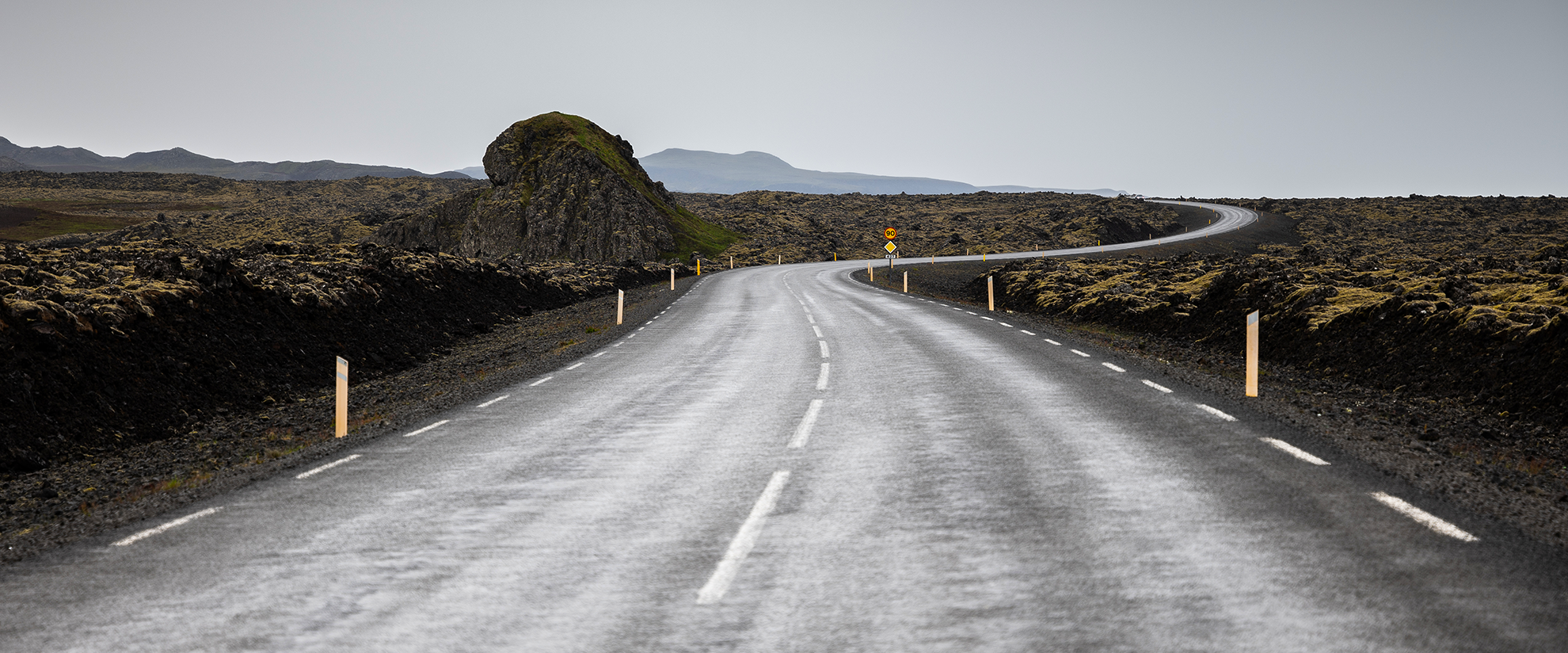
Practical Travel Tips
Driving in Iceland in September: Embrace the Autumn Adventure
19.08.2025
September is a standout month for road trips in Iceland. The crowds thin, the landscapes glow with early autumn colors, and the first hints of the Northern Lights return to the night sky. If you’re planning a self-drive holiday, driving in Iceland in September offers a more relaxed pace than peak summer while still providing excellent access to the Ring Road, major attractions, and many highland routes early in the month. This guide covers what to expect, how to prepare, and the best routes to make your September journey safe, scenic, and unforgettable.
What you’ll learn:
- Why September is ideal for a flexible, less-crowded Iceland road trip
- Weather, daylight, and road conditions to expect (10–13 hours daylight; 4–10°C)
- The best vehicles for your plans: compact vs. 4x4
- Safety tips, parking etiquette, and EV charging insights
- Classic and off-the-beaten-path routes perfect for early autumn
- How to catch the Northern Lights by rental car
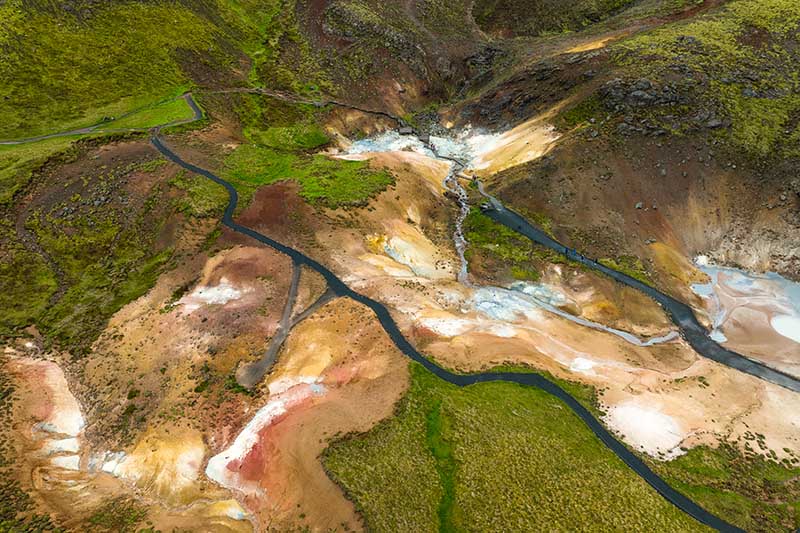
Why Drive in Iceland in September
September marks a gentle shift from summer to autumn. Daylight shortens to around 10–13 hours, giving you ample time to explore while bringing back darker skies for aurora viewing. Temperatures cool to 4–10°C (39–50°F), and you’ll notice a crispness in the air—great for hiking stops and waterfall walks without summer’s peak heat or crowds.
Top reasons to visit by car in September:
- Fewer visitors than July and August, meaning easier parking and calmer viewpoints
- Good accessibility on the Ring Road and major secondary routes
- Peak autumn colors in late September, especially in the north and highlands
- Aurora potential returns on clear nights with low light pollution
As always in Iceland, conditions can shift fast. Check road status on road.is and weather forecasts at vedur.is daily before you set out.
Weather, Daylight, and What to Pack
September’s weather is variable. Expect cool mornings, a mix of sun and showers, and occasional wind. While snow is uncommon at low elevations, higher mountain passes can see early dustings later in the month.
Plan for:
- Daylight: roughly 10–13 hours depending on your travel dates and location
- Temperatures: 4–10°C, colder in the north and inland highlands
- Clothing: base layers, a warm mid-layer, waterproof jacket and pants, gloves, and a hat
- Footwear: waterproof hiking shoes with good grip for wet trails and viewpoints
Tip: Keep a compact emergency kit in your trunk—water, snacks, a flashlight, a power bank, and a reflective vest. You’ll rarely need it, but it’s good practice in remote areas.
See also: Iceland Weather by Month: What to Expect and How to Drive Safely with Holdur Car Rental.
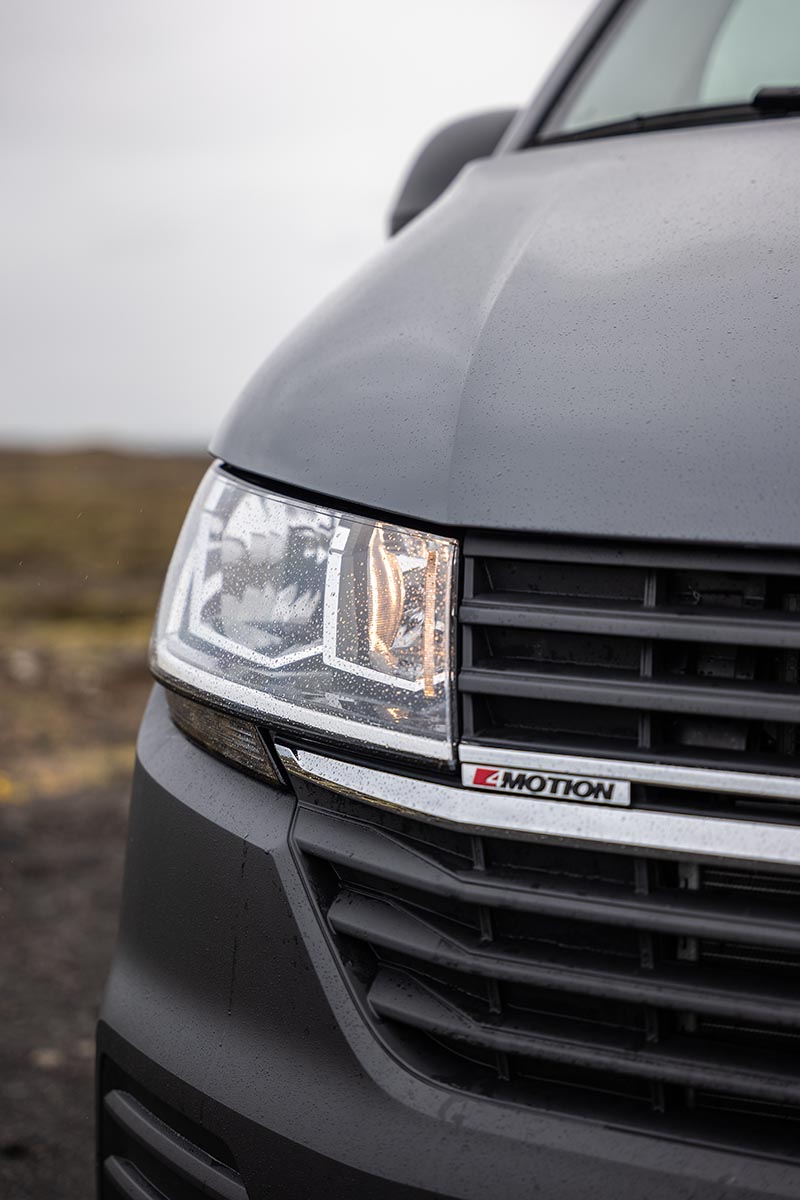
Choosing the Right Vehicle
Your itinerary dictates your car.
- Compact and economy cars: Ideal for the Ring Road (Route 1), Golden Circle, South Coast, Snæfellsnes, and most paved or well-maintained gravel spurs. You’ll enjoy better fuel economy and easier parking in towns.
- 4x4 SUVs: Recommended if you plan to drive F-roads or visit highland areas like Landmannalaugar or Kerlingarfjöll—especially early in September, when most F-roads can still be open. A higher clearance and 4WD traction are essential for river crossings and rougher surfaces.
Remember:
- F-roads require a 4x4 by law.
- Highland access becomes more weather-dependent as September progresses. Check road.is before committing to inland routes.
If you prefer a lower-emission trip, Iceland’s charging network supports electric and plug-in hybrid vehicles along major corridors, with an expanding footprint in regional towns.
Road Conditions in September
By September, the Ring Road and primary routes are typically in excellent condition. Many F-roads remain open early in the month but may close with the first significant snowfall, heavy rain, or deteriorating conditions. Gravel roads in the Westfjords and remote regions are passable but can be narrow, corrugated, or muddy after rain—slow down and keep both hands on the wheel.
What to watch for:
- Sudden wind gusts, especially on exposed bridges and plateaus
- Reduced traction on wet gravel; increase following distance and brake gently
- One-lane bridges: yield to the closest vehicle and proceed slowly
- Sheep on rural roads: they can change direction suddenly—brake early
Use road.is for live closures and vedur.is for weather alerts. If you see “impassable” or warnings for high winds and heavy rain, rethink your route or timing.
Safe Driving Practices for September
Good habits go a long way toward stress-free travel:
- Headlights on at all times, day and night
- Respect speed limits: 90 km/h on paved rural roads, 80 km/h on gravel unless posted otherwise
- Never stop on the roadway for photos—use pullouts
- Avoid off-road driving; it’s illegal and heavily fined
- Keep your fuel above half a tank outside urban areas
- If you’re unsure about a river crossing on an F-road, don’t attempt it; water levels can rise after rain
Add a daily ritual: morning checks of road.is and vedur.is, plus a glance at your route for fuel and food stops. It takes five minutes and can save you hours of delays.
Parking, Etiquette, and City Navigation
Urban areas like Reykjavík and Akureyri use paid parking zones. Look for color-coded signs and pay stations, or use local apps. In smaller towns and at major attractions, parking is usually free or paid at designated lots. Never park on sensitive moss, in tall grass, or outside marked spaces.
Local etiquette:
- No honking unless it’s necessary for safety
- Flashing headlights often means “after you” or “thanks”
- Use turnouts to let faster traffic pass on narrow roads
- Close gates behind you in farming areas if you find them closed
More about parking: Parking in Iceland: What You Need to Know.
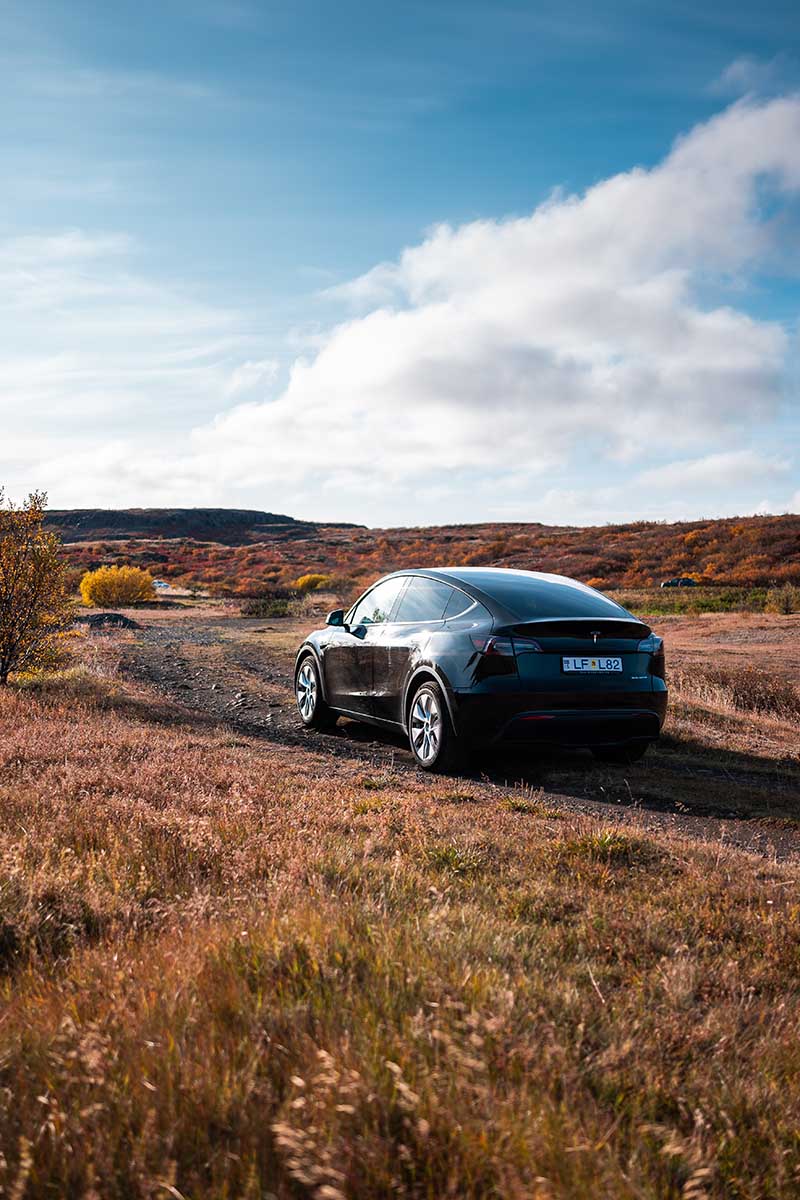
Fueling and EV Charging
- Fuel stations: Regular along Route 1 and in towns. Self-service pumps accept credit/debit cards 24/7.
- EV charging: High-speed chargers are available along the Ring Road and in many regional hubs. Use apps like PlugShare or Ísorka to plan stops.
- Strategy: Top up whenever convenient, especially before remote stretches like the Eastfjords or portions of the Westfjords.
When renting with Höldur Car Rental, ask about fuel partnerships and charging tips specific to your planned route.
Scenic Routes Perfect for September
September’s cooler air and softer light make for rich colors and crisp photos. These routes shine this month:
Golden Circle
- Highlights: Þingvellir National Park, Strokkur geyser at Geysir, and Gullfoss waterfall.
- Why September: Fewer crowds than summer and dramatic, low-angle light for photos. Trails are less busy, and you can linger at overlooks without the peak-season rush.
- Driving notes: Fully accessible by compact car; paved roads with clear signage.
South Coast to Vík (and beyond to Höfn)
- Highlights: Seljalandsfoss and Skógafoss waterfalls, black-sand beaches near Vík, Fjaðrárgljúfur canyon, and glacier views near Skaftafell and Jökulsárlón.
- Why September: Rolling fields, moody skies, and fewer tour buses. As nights get darker, you might spot auroras near Jökulsárlón reflecting over the glacier lagoon.
- Driving notes: Mostly paved; watch wind speeds on open stretches and near coastal cliffs. Avoid the surf at Reynisfjara—rogue waves are dangerous year-round.
Westfjords
- Highlights: Dynjandi waterfall, dramatic fjords, puffin season winding down at Látrabjarg, and quiet fishing villages.
- Why September: The region is calmer and even more unhurried than in midsummer. You’ll feel like you have entire fjords to yourself.
- Driving notes: Expect longer distances, winding gravel sections, and fewer services. Start early, refuel often, and drive slowly on gravel for safer handling.
Snæfellsnes Peninsula
- Highlights: Snæfellsjökull glacier, Arnarstapi sea cliffs, Djúpalónssandur beach, and Kirkjufell mountain.
- Why September: Excellent for a one- or two-day loop with varied scenery and consistent access. Fewer crowds at iconic viewpoints.
- Driving notes: Mostly paved; compact cars are sufficient.
Highlands (early September only; weather permitting)
- Highlights: Landmannalaugar’s rhyolite mountains, Kerlingarfjöll’s geothermal valleys.
- Why September: Early month can still offer accessible trails with autumn hues creeping across the highlands.
- Driving notes: 4x4 required for F-roads. Always verify openings on road.is and never attempt river crossings unless you’re experienced and conditions are safe.
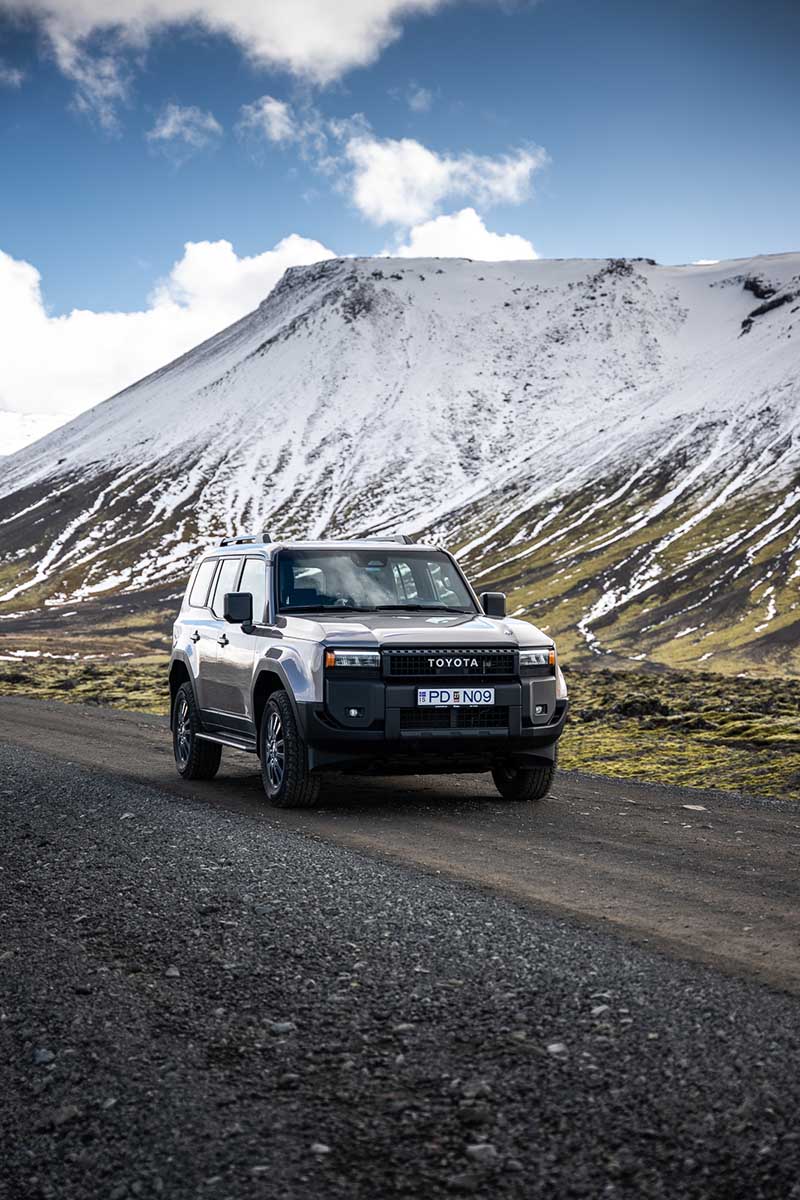
Northern Lights: Your September Advantage
As daylight shrinks, dark skies return—and with them, the chance to see the Northern Lights. September often brings the first reliable viewing nights of the season, especially away from city lights on clear, calm evenings.
Quick aurora-driving tips:
- Check the cloud cover and aurora forecast.
- Seek out low-light areas with open horizons—think rural pullouts, parking lots near beaches, or viewpoints away from towns
- Pack warm layers, a tripod for photos, and patience; displays can peak after midnight
- Never park on the road shoulder where it’s unsafe or blocks traffic—use marked pullouts
Practical Itinerary Ideas
- 3 days: Golden Circle + South Coast to Vík í Mýrdal, with an aurora chase night if skies are clear
- 5–7 days: Ring Road segment (South + East to Höfn or Egilsstaðir) or a full Snæfellsnes + South Coast combo
- 8–10 days: Full Ring Road with detours to the Eastfjords and North Iceland, or add a Westfjords loop for seasoned drivers
Adjust plans if weather shifts—September rewards flexibility.
FAQs: Driving in Iceland in September
Do I need a 4x4 in September?
Not for the Ring Road or most popular routes. You’ll need a 4x4 for any F-roads or highland travel, which are more weather-dependent later in the month.
Can I still access the highlands?
Often in early September, yes—but closures can start with the first snows or heavy rain. Check road.is daily.
Is September good for seeing the Northern Lights?
Yes. With 10–13 hours of darkness, conditions are favorable when skies are clear and activity is strong.
Are services still open?
Most remain open, though some summer-only cafés, campgrounds, or tours begin to wind down by late September. Book lodging ahead in remote areas.
How should I handle gravel roads?
Slow down, keep a firm grip, and increase following distance to avoid rock chips. Reduce speed when passing oncoming cars to minimize flying stones.

Final Tips for a Smooth September Drive
- Plan A and Plan B: Have alternate routes in case of closures
- Start earlier: Daylight is shorter—front-load your day for key sights
- Book strategically: Secure hotels in remote regions and near top attractions
- Keep an eye on wind: It affects driving comfort and safety on exposed roads and bridges
- Respect nature: Stay on marked roads and paths to protect fragile ground
Plan Your September Road Trip with Höldur Car Rental
September invites you to slow down, savor golden light, and rediscover Iceland’s big landscapes without the midsummer crowds. Whether you’re tracing the Ring Road, chasing auroras by the glacier lagoon, or dipping into the highlands early in the month, the right car and smart planning make all the difference.
With Höldur’s selection of over 8,000 vehicles, we have the perfect car for your adventure. From compact cars for navigating city streets to rugged 4x4 vehicles for the highlands, we’ve got you covered. With rental locations conveniently located across Iceland, including Keflavik Airport, getting started couldn’t be easier.
Choose the vehicle that fits your itinerary—compact for the Ring Road, 4x4 for F-roads—and check road.is and vedur.is before you go. Then hit the road with confidence. Start planning your autumn adventure today with Höldur Car Rental and make September the month you fall in love with Iceland’s open road.




